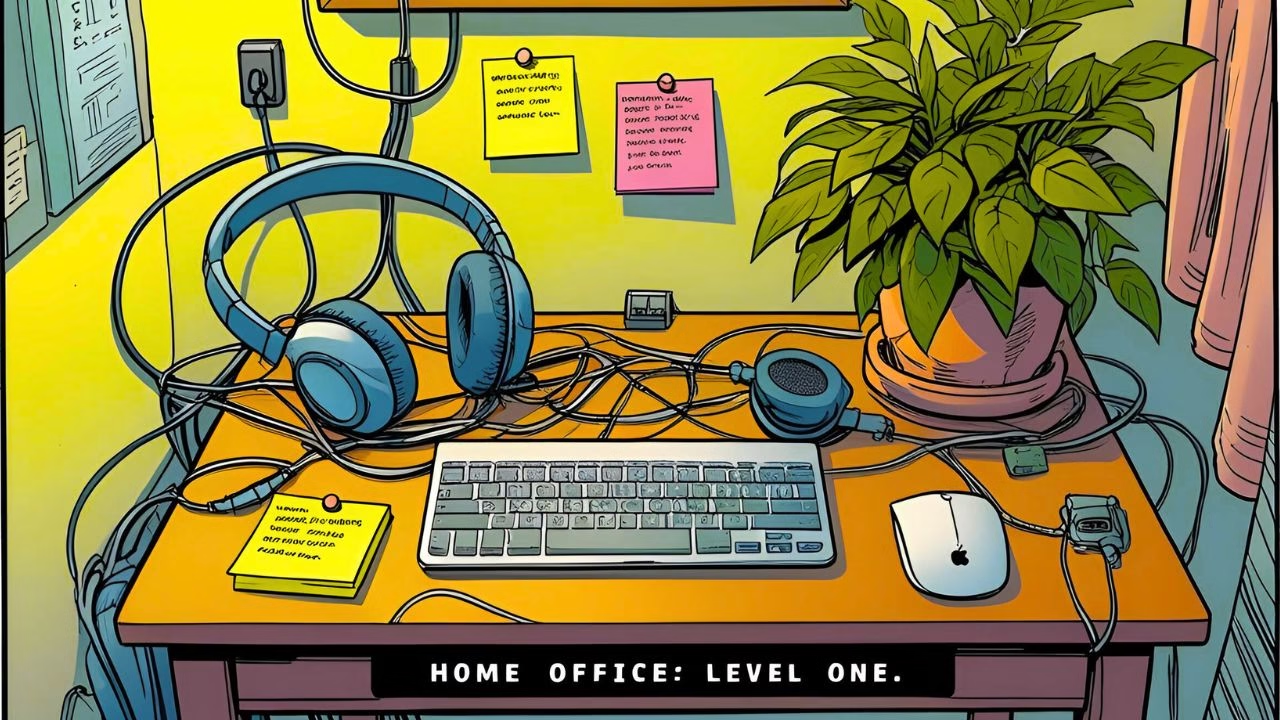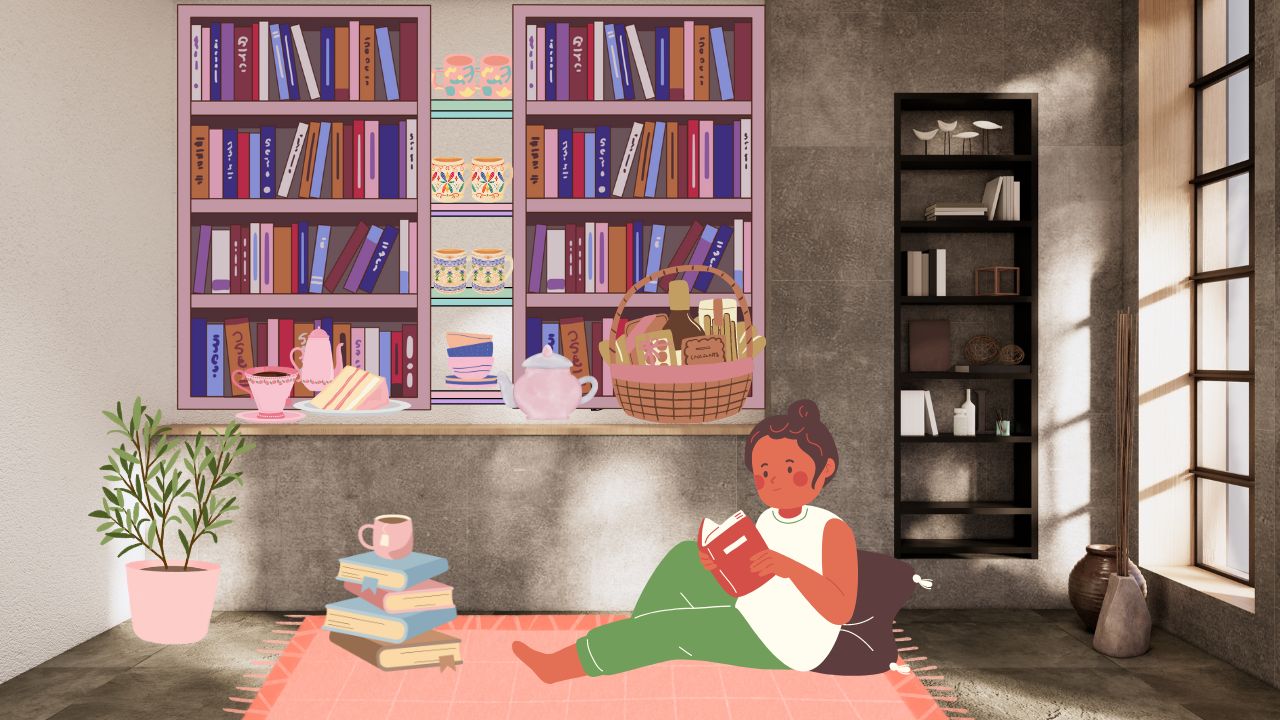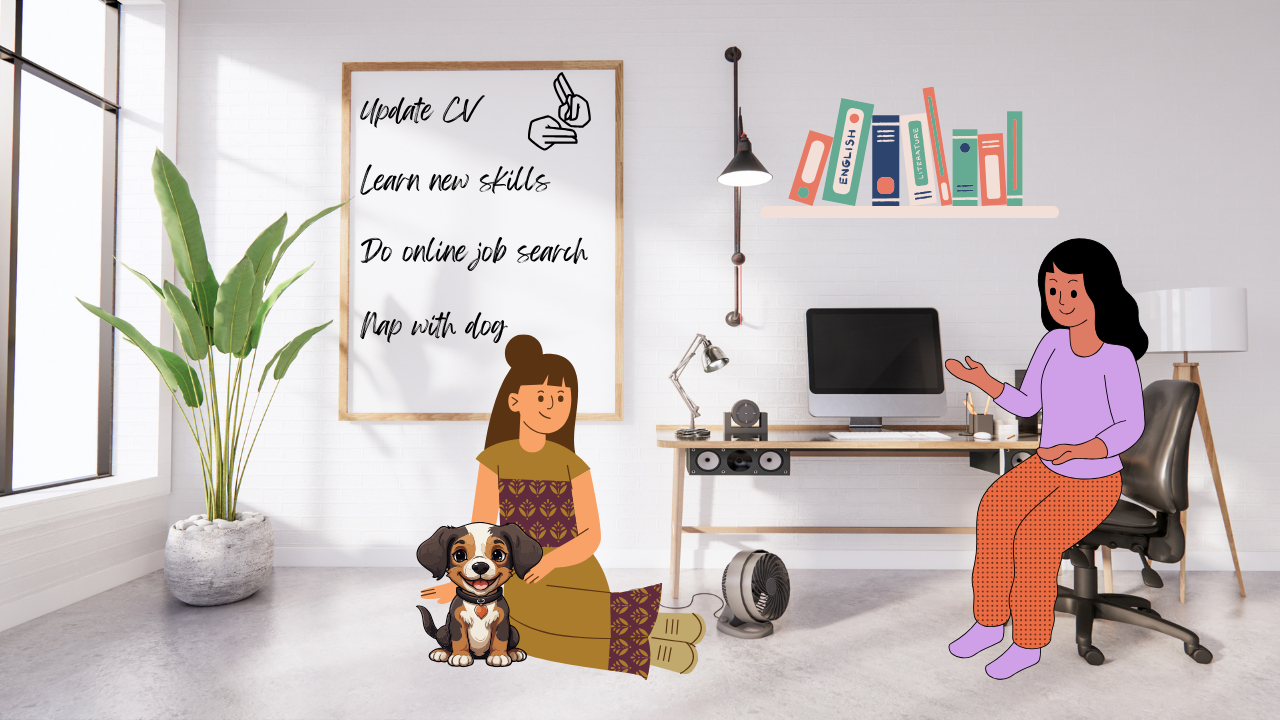💻Foreword
Creating a home office can feel like a big ask when your energy is low, and your budget is even lower. But you don’t need a Pinterest-perfect setup to make a space that works. Whether you’re chronically ill, disabled, or managing mental health challenges, the proper workspace can help you feel more grounded and more productive. Even on the tough days. In this post, we’ll explore gentle and affordable ways to carve out a space. Not only should it support your body, but your brain, and your work-from-home life.

🤑 Affordable Ways to Furnish Your Space
You don’t need a £500 ergonomic desk to do meaningful work from home. With a little creativity (and perhaps a bit of asking around), you can set up something that supports your needs without draining your bank account.
🔄 Creative Alternatives to Traditional Furniture
Fold-out tables, lap desks, or even a sturdy tray on the bed can serve as makeshift desks. If you need to switch between lying down and sitting upright during the day, look for adjustable surfaces or over-bed tables commonly used in care settings. In that case, these often appear on Freecycle or Facebook Marketplace.
🔍 Where to Find Affordable Home Office Furniture
Charity shops, Gumtree, Freegle, and local “buy nothing” groups can be goldmines. You might be surprised by what people are giving away—sometimes, whole desks or bookshelves are waiting for a new home. If lifting or collecting is challenging, some groups may offer local delivery, especially if you mention any disability or health issues.
Don’t worry if your setup doesn’t match. Your home office doesn’t need to be pretty—it just needs to be practical. The aesthetics can always be addressed later when energy or funds allow. Right now, focus on what makes work more possible and comfortable today.

📦 Storage That Doesn’t Cost the Earth
Keeping your home office organised can feel like a mountain to climb—especially when space and energy are limited. But good storage doesn’t have to cost a fortune or require fancy furniture.
Look around your home for boxes, baskets, or jars you can repurpose. Even shoe boxes make excellent organisers for papers, cables, or small gadgets. For larger items, thrift stores and charity shops often have shelves, drawers, or crates at affordable prices.
If you’re short on space, vertical storage options like wall hooks, pegboards, or hanging organisers can keep things accessible without occupying the floor area. A simple set of stackable plastic drawers can do wonders for maintaining neat supplies and easy to find.
Remember, the goal is to create a space that feels manageable and less overwhelming—because when your things have a home, your mind has more room to focus.
Home Office Focus Tools:

- Forest: Helps you stay off your phone by growing a virtual tree while you work. If you leave the app, the tree dies—motivation with a soft nudge.
- Pomodoro Timers: Apps like Be Focused or TomatoTimer break work into short bursts with rest intervals, helping manage energy without burnout.
Productivity Tools:

- Notion or Evernote: Great for organising notes, ideas, and projects in one place, with flexible templates that can adapt to your style.
- Speech-to-Text: Built-in dictation on smartphones or apps like Otter.ai makes it easier to capture thoughts without typing.
Accessibility Features:

- Utilise screen readers, high-contrast modes, or font adjustment settings on your device to minimise eye strain and increase comfort.
Try out different tools gently and see what fits your rhythm. Your home office is your sanctuary, and these helpers are here to support, not overwhelm.
🏡 Shared Spaces: Making a Home Office Inviting and Yours
Creating a welcoming home office in a shared space can be tricky but not impossible. When you share a room or live with others, making your work zone feel personal and inviting helps set clear boundaries and boost your focus.
Start by defining your space with simple dividers, curtains, or even a bookshelf. Specifically, these create a visual cue that says, “This is my work area.” Soft lighting, like a small lamp or fairy lights, can make the space feel cosy and less clinical.
Add a few personal touches—a favourite mug, a photo, or a plant—to bring comfort and joy. If noise is an issue, noise-cancelling headphones or a white noise machine can create a buffer.
Clear communication with housemates about your work times and needs also helps everyone respect your space. Remember, your home office is your sanctuary, even in a shared home.

🔨 Building a Home Office, Bit by Bit
Setting up a home office on a budget isn’t just about making do. Chiefly, it’s about reclaiming your space, your energy, and your sense of purpose. Even when funds, health, or motivation run low, you’re still creating something meaningful. Truly, a space that supports you.
If things feel overwhelming, start with just one small change. Such as, a box to keep your supplies in one place, a cushion that makes your seat bearable, or a sticky note with a hopeful message. Certainly don’t worry about perfection. Just begin with what’s possible today.
Indeed, every corner claimed, every tool chosen, and every comfort added is a step toward dignity and stability. You deserve a workspace that works for you! In effect, a workspace that meets your needs, honours your pace and gives you room to thrive.
🌍 Additional Resources (UK, USA, Canada, Australia, NZ)
Not only for when you’re short on cash 😉, but also useful for anyone setting up a home office with health needs in mind.
🇬🇧 United Kingdom
- Access to Work – Offers workplace support for disabled workers, including home equipment, transport, and coaching.
- AbilityNet – Tech support and ergonomic advice for people with disabilities or health conditions working from home.
🇺🇸 United States
- Job Accommodation Network (JAN) – Tailored advice for workplace accommodations (including self-employed).
- Rehabilitation Services Administration (RSA) – Offers state-specific grants, resources, and business startup help for disabled entrepreneurs.
🇨🇦 Canada
- Entrepreneurs with Disabilities Program – Funding and training for small businesses run by people with disabilities (Western & Northern Canada).
- Neil Squire Society – Assistive tech support and ergonomic solutions for remote workers with disabilities.
🇦🇺 Australia
- JobAccess – Covers modifications, equipment, and support for disabled workers (not just salaried roles).
- Australian Centre for Disability Law – Guidance on your legal rights when working remotely.
🇳🇿 New Zealand
- Workbridge – Offers job support, training, and funding for adaptive equipment. Even if you’re self-employed or part-time.
- Enable New Zealand – Provides equipment and solutions to enhance accessibility at home or work.






